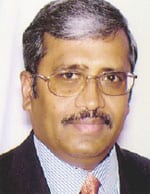Project Finance Activity Reaches Fever Pitch
Middle East Boosts Financing Boom
 |
|
|
Project financing consists of financing assets on a long-term basis and, as such, is similar to long-term lending. Repayment of the debt is accomplished by the long-term cash flow of the project, without a full guarantee from the shareholders. The trend is for projects to grow larger and larger, Rousseau says, noting that BNP Paribas coordinated a group of 36 commercial banks that committed to $100 million each for the $3.6 billion bank facility for the Qatargas II project financing that closed in December 2004. The $9.3 billion project, a joint venture of Qatar Petroleum, with a 70% stake, and ExxonMobil, with 30%, will deliver liquefied natural gas from Qatar to the UK. One innovation in the structure of the deal is that the participating banks will rely on the price of natural gas instead of oil in calculating cash flow.
More LNG projects in Qatar and in Sakhalin in the Russian Far East are likely in 2005, with additional projects planned for Nigeria and Indonesia, Rousseau says. LNG, a relatively small part of the energy sector five years ago, now represents a significant portion of the industry, as well as of project finance activity. Qatargas II, the largest oil and gas project financing ever, will produce 15.6 million metric tons of LNG per annum.
The vertical integration of the project is exceptional, with Qatar sharing in the investment in the re-gasification plant in the UK and in the LNG shipping business, says M. Chandrasekaran, head of project and structured finance at Bahrain-based Gulf International Bank, which was a lead arranger of the Qatargas II facility. The same project partners developed the entire supply chain, from wellhead to importing terminal, with integrated financing. Qatar also secured sufficient capacity to produce specialized LNG ships to meet its future exporting plans.
 |
|
|
In January Qatar began construction of a $5.5 billion airport that will be one of the biggest in the world. A $4 billion airport expansion is under way in Dubai. Meanwhile, Qatars Ras Laffan LNG is adding additional trains, or gas-liquefaction facilities, to supply Petronet in India and Edison Gas of Italy. Large future trains are planned to supply LNG to the US.
LNG projects involve complex chain financings, whereby co-dependent assets are developed simultaneously, says Raj Pande, head of Asia project finance at international law firm Paul, Hastings, Janofsky & Walker. In order to support the supply of LNG, special-purpose vessels need to be constructed, Pande says. The first step is to secure long-term contracts for sale of the gas. The linchpin in the whole project is the receiving terminal, he says.
 |
|
|
Pande is also currently representing the project lenders to the Guangdong LNG project in southern China, involving a chain financing of the tankers that will carry the LNG from Australia. The project is being developed by BP and CNOOC. The construction of the receiving terminal and distribution pipeline was entirely financed by the Big Five government-owned Chinese banks on a fully non-recourse basis for up to 18 years, the longest term ever for such a financing.
Flush with liquidity, the Chinese banks are likely to continue to be active in the local and regional project finance markets, Pande says. They already have financed major projects in Southeast Asia, including Indonesia and Thailand. China plans to build four additional LNG terminals, as well as several large petrochemical plants.



